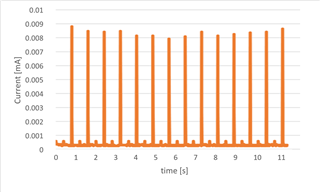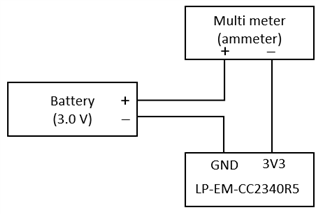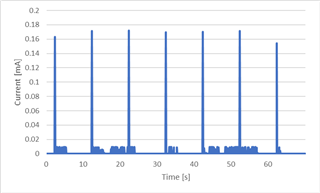Other Parts Discussed in Thread: , ENERGYTRACE
Hi.
The sample code "empty.c" was written to LP-EM-CC2340R5 to check the current.
It can be seen that the current periodically rises by about 8µA.
Why does the current rise?
Also, the current needs to be reduced in the product I am developing. Is there any method to reduce this periodic rise in current?
A graph of the currents obtained is shown below.

To check the current consumption, I changed the mainThread in empty.c as follows.
simplelink_lowpower_f3_sdk_7_40_00_64\examples\rtos\LP_EM_CC2340R5\drivers\empty
/*
* ======== mainThread ========
*/
void *mainThread(void *arg0)
{
/* 1 second delay */
uint32_t time = 1;
/* Call driver init functions */
GPIO_init();
// I2C_init();
// SPI_init();
// Watchdog_init();
while (1)
{
sleep(time);
}
}
The current values were measured with the following circuit.



